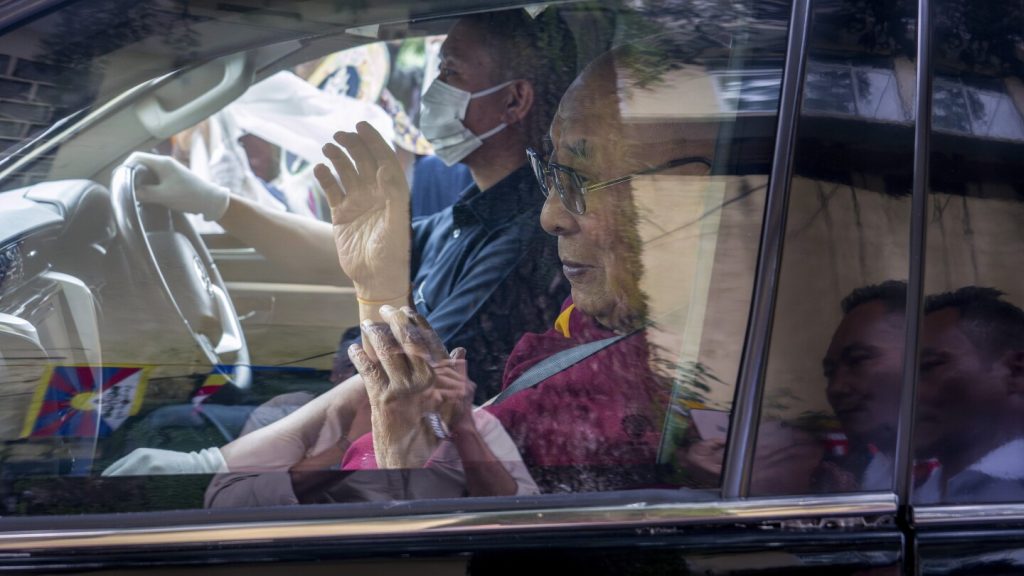The Dalai Lama recently returned to the headquarters of the Tibetan government-in-exile in Dharamshala, India, after undergoing knee replacement surgery in New York. Hundreds of followers welcomed him at the airport and his residence, wearing colorful robes and waving scarves and flowers. Traditional dances and drum beats accompanied his arrival, with Tibetan and Buddhist flags decorating the area. The Dalai Lama, aged 89, had been recovering at the Nappi Farmhouse in Syracuse before flying back to India. His doctors reported that he was healing well and expected to improve over the next six to 12 months.
Physicians to the Dalai Lama mentioned that the surgical incision had healed without complications and physiotherapists were pleased with the speed of his recovery. The Dalai Lama has been based in Dharamshala since fleeing Tibet in 1959 after a failed uprising against Chinese rule. While he relinquished his political responsibilities in 2011, he remains the spiritual leader of the Tibetan community. His followers view him as a unifying figure for Tibetans both inside and outside China, with over 100,000 Tibetan refugees residing in India, Nepal, and Bhutan.
China maintains strict control over all religions and has escalated efforts to assimilate minority groups like Tibetans and Uyghurs in recent years. The Chinese government condemns the Dalai Lama as a proponent of Tibetan independence and has not engaged with his representatives for over a decade. However, the Dalai Lama asserts that he advocates for Tibet’s autonomy and the preservation of its Buddhist culture. Despite the political tensions between China and Tibet, the Dalai Lama’s return to Dharamshala signifies his continued influence as a spiritual leader among the Tibetan community.
The Dalai Lama’s return to India also highlights the ongoing struggles faced by Tibetan refugees living in exile. Many Tibetans have resettled in Western countries such as the U.S., Canada, Germany, and Switzerland in search of better opportunities and freedoms. The Dalai Lama’s presence in Dharamshala serves as a beacon of hope for Tibetans seeking to preserve their cultural heritage and traditions in the face of ongoing Chinese suppression. As he continues his recovery from knee surgery, the Dalai Lama’s resilience and determination inspire his followers to remain steadfast in their pursuit of peace and justice for Tibet.


